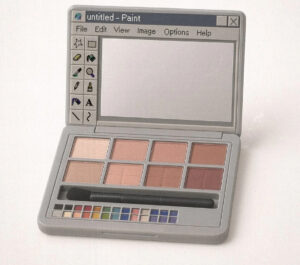Since its humble beginnings as a low-budget horror-comedy in 1960, “Little Shop of Horrors” has clawed its way into the cultural zeitgeist with monstrous tenacity, captivating audiences with its quirky blend of horror, humor, and social commentary. Today, more than 60 years after its initial release, this once-obscure film has transformed into a beloved, multi-generational phenomenon. Its enduring appeal can be traced through numerous adaptations, from stage musicals to films, each reimagining the story with fresh relevance for new audiences. But what is it about “Little Shop of Horrors” that keeps it alive, blooming in the pop culture garden? Let’s dig into the roots of this cult classic’s staying power.
The Original Seed: The 1960 Film
Directed by Roger Corman, the original “Little Shop of Horrors” was a quirky, black-and-white B-movie shot in a mere two days on a shoestring budget. The film centered on Seymour Krelborn, a down-on-his-luck florist who discovers a strange, carnivorous plant he names Audrey II. As the plant grows, it develops an insatiable appetite for human blood, leading Seymour down a dark path of moral compromise. Though it didn’t make waves initially, the film’s campy tone, strange humor, and offbeat characters – including a young Jack Nicholson in a memorable cameo as a masochistic dental patient – laid the groundwork for a phenomenon waiting to blossom.
Initially dismissed by critics, “Little Shop of Horrors” gained a second life when it entered television syndication, capturing the curiosity of late-night viewers. Its quirky premise, budget-conscious effects, and memorable one-liners quickly earned it a reputation as a midnight movie favorite. The film’s offbeat humor and DIY charm were key to its cult appeal, inviting audiences to revel in the absurdity while delivering a satirical take on ambition and the human desire for “more.”
The story of “Little Shop of Horrors” found fertile ground in the 1982 musical adaptation by composer Alan Menken and writer Howard Ashman. The musical amplified the dark humor and added a toe-tapping soundtrack with memorable doo-wop and Motown-inspired songs like “Suddenly, Seymour” and “Feed Me (Git It).” This adaptation not only captured audiences with its catchy tunes but also deepened the story’s themes, turning Audrey II into an unforgettable symbol of unchecked desire and moral corruption.
The stage musical became an unexpected sensation, selling out shows Off-Broadway before making its way to Broadway and beyond. The musical’s success helped solidify “Little Shop of Horrors” as more than just a cult movie – it was now a bonafide piece of cultural history. As a result, it captured the attention of Hollywood once again, leading to a 1986 film adaptation directed by Frank Oz. This version starred Rick Moranis as Seymour, Ellen Greene reprising her stage role as Audrey, and Levi Stubbs as the voice of the diabolical plant. With dazzling special effects and unforgettable performances, the 1986 Little Shop of Horrorsbecame a beloved staple, introducing the story to an even broader audience.
The tale of Little Shop of Horrors refuses to wilt. In recent years, it has enjoyed several high-profile revivals. The musical has been staged countless times across the globe, from high school theaters to professional stages, often updated with modern references and creative interpretations. Some productions have experimented with diverse casting and unique staging, adding fresh layers to the familiar story and reflecting the evolving conversations around diversity and inclusion in theater.
In 2020, Little Shop of Horrors returned Off-Broadway with a well-received production featuring Jonathan Groff, Tammy Blanchard, and Christian Borle. This revival, like many before it, tapped into the story’s timelessness while capturing modern audiences’ imaginations with its mix of nostalgia and renewed energy. The show’s darkly comedic take on ambition and moral compromise still resonates today, particularly in an era when individuals are increasingly critical of capitalist ambition and environmental consequences.
Hollywood, too, has shown renewed interest in another film adaptation, reportedly with Scarlett Johansson and Taron Egerton in talks for lead roles. This potential reboot speaks to the franchise’s enduring popularity and ability to morph with the times, appealing to a new generation while staying true to its roots.
Little Shop of Horrors remains a powerful piece of social satire that uses horror and humor to expose our darker urges. Audrey II, the ravenous plant, embodies the dangers of ambition and greed, two forces that can consume and corrupt even the kindest of souls. For Seymour, every sacrifice to feed Audrey II pushes him further from his moral compass, showcasing a Faustian descent that is both relatable and chillingly relevant. The plant’s demand of “Feed me!” echoes the relentless demands of a society always pushing for more – more success, more wealth, more consumption.
In this sense, “Little Shop of Horrors” feels as relevant today as it did in the ’80s. As conversations about the environment, capitalism, and ethical compromise take center stage, the tale of a plant that feeds on human weakness hits home. The story’s blend of horror and comedy provides a cathartic escape, allowing audiences to confront dark societal truths while still having fun. This rare balance is what gives “Little Shop of Horrors” its edge, offering both entertainment and an unexpected moral parable.
Impression
Beyond its satirical themes, “Little Shop of Horrors” has carved out a unique space in pop culture. Audrey II, with its booming voice and sinister charm, has become one of cinema’s most memorable villains. The image of the plant with a wide, toothy grin has permeated everything from Halloween costumes to fan art, securing its place as an iconic symbol in horror and musical theater. Meanwhile, songs like “Suddenly, Seymour” have achieved cult status, serving as anthems for hopeless romantics and theater kids alike.
The influence of “Little Shop of Horrors” extends beyond its direct adaptations, inspiring countless artists in film, music, and theater. Its success paved the way for horror-comedies like “The Rocky Horror Picture Show” and “Beetlejuice”, both of which embrace the same blend of camp and satire. The musical’s genre-defying charm has made it a gateway for audiences to explore both horror and theater, bridging two worlds that don’t often intersect.
In the end, “Little Shop of Horrors” endures because it is fundamentally about human nature. We all have dreams, ambitions, and desires – and we all wrestle with the temptation to take shortcuts to achieve them. Through Seymour’s tragic tale, we see the dangers of letting our darker instincts take over, of making deals with forces we can’t control. As long as people grapple with these universal themes, “Little Shop of Horrors” will remain relevant, a darkly humorous reminder of the pitfalls of ambition.
No comments yet.








